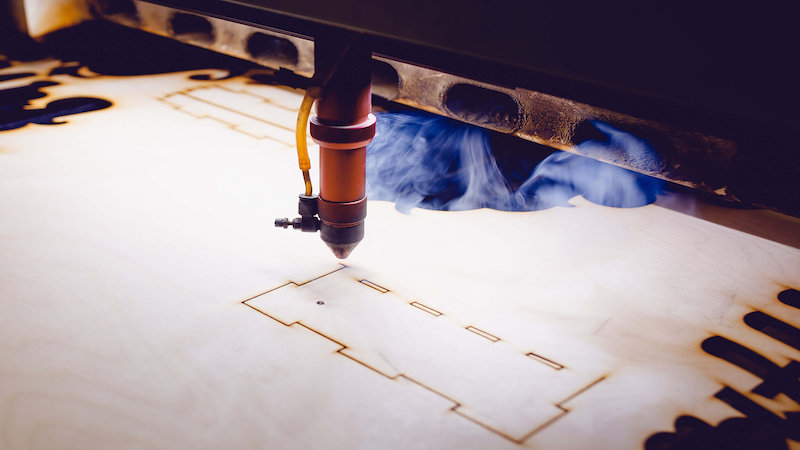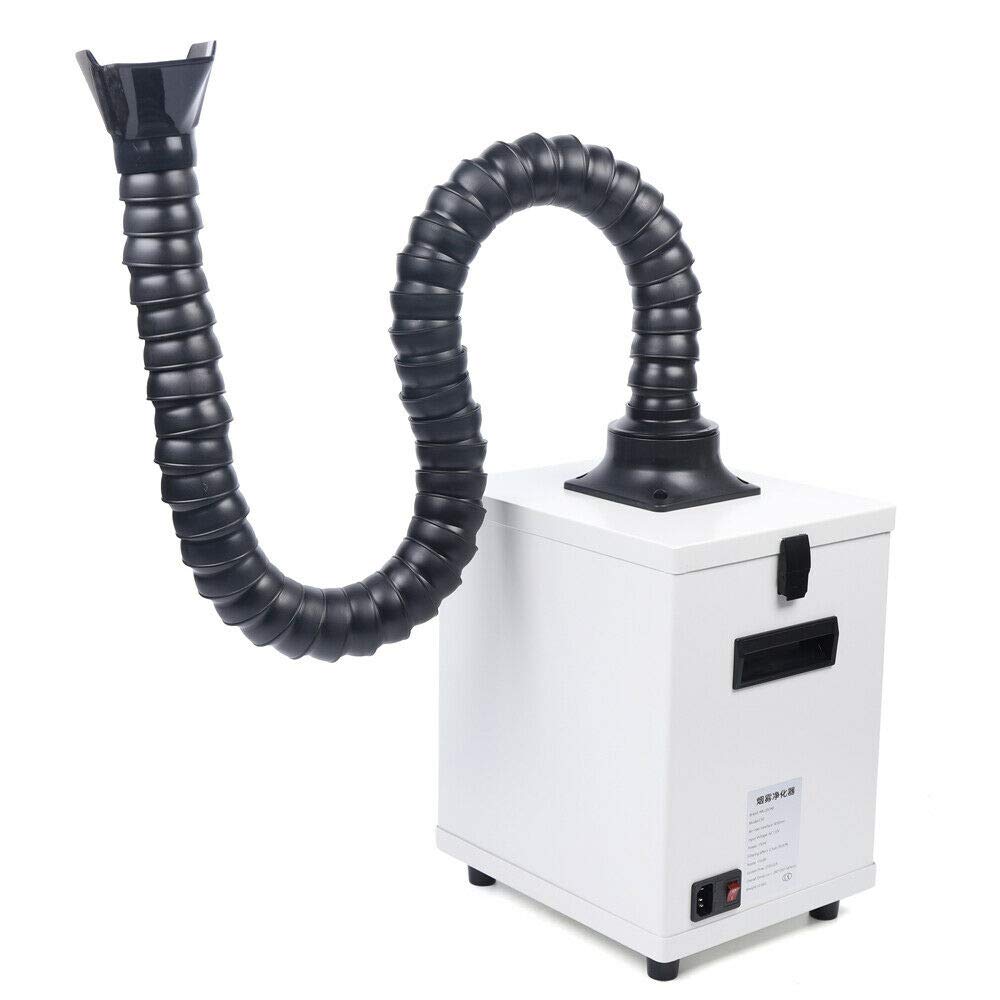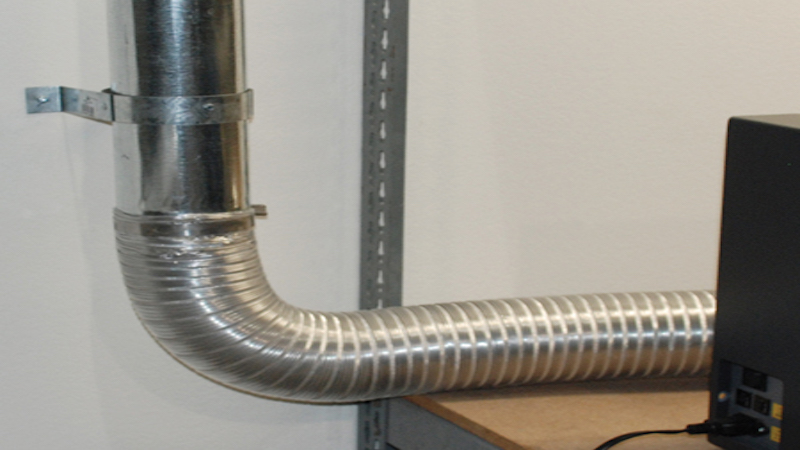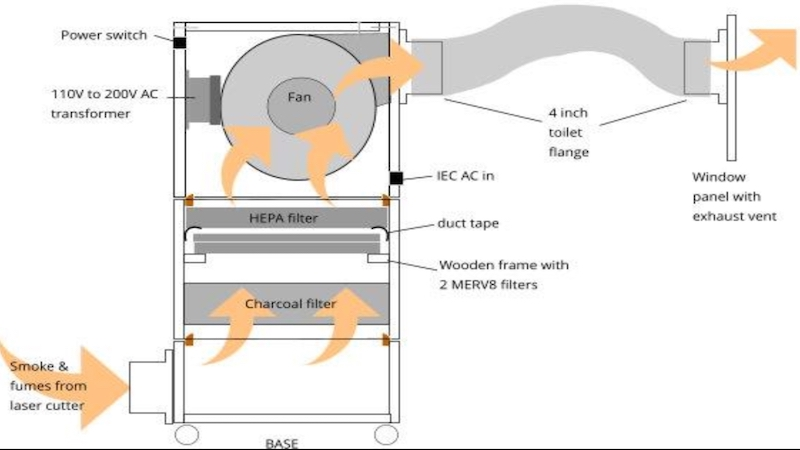

Discover the essentials of laser cutter exhaust systems: types, setup tips, and more in our comprehensive guide. Enhance safety and efficiency today!
Laser cutters and exhaust systems are inseparable. A top-notch exhaust system isn’t just vital for worker safety; it also enhances cutting efficiency and extends machine lifespan.
Yet, many business owners grapple with creating an effective exhaust setup. To assist, we’ve compiled a comprehensive guide on laser cutter exhaust systems. Let’s dive in!
Laser cutters are versatile machines that can perform cutting, engraving, and marking processes. However, they produce toxic fumes, smoke, and particulates as a by-product due to the burning of the material. Laser cutter exhaust systems extract and expel these toxic fumes responsibly, keeping the workers and environment safe.

The resulting smoke and fumes during the process can also damage the laser machine components, specifically the optical lens, resulting in frequent maintenance and increased downtime.
Laser cutter exhaust systems are of multiple types and require some considerations on the user end before installing them, which we will discuss in detail in the following sections.
D o You Have Any Questions? Let Us Solve Your ProblemExhaust systems are sold separately from Laser cutting machines because there is no one-size-fits-all. Some machines do come with basic exhaust accessories but it’s better to set up one of your own.
Each operation produces different kinds of toxic gases and requires customized solutions. Here are the basic factors that decide the type of Laser exhaust solution needed.
An exhaust system is essential for any laser engraving machine or cutting machine; without it, the operation can be a serious health risk for workers and the machine itself. Here are the key parameters that drive the need for effective exhaust systems.
It’s a no-brainer that the fumes produced during laser cutting are hazardous. Mind you, it has nothing to do with the laser beam itself but rather the vaporization of material that causes toxic smoke.
It can cause respiratory issues, adverse effects on internal organs, and, in worse cases, can be fatal.
Smaller desktop laser cutters are safe and classified as laser class 1 types. Bigger laser cutters like 50 W and above require proper ventilation and are classified as class 3 and class 4 types, describing the danger level. Such systems should not be run without an adequate ventilation system.

People in the laser cutting business have to follow certain protocols to ensure the safety of their working staff. Everyone should follow the safety protocols, whether it’s a medium-scale laser-cutting business operating from a garage or a large laser-cutting industry.
The standards also define the protocols for expelling pollutants into the environment. In extreme cases, the fume must be pretreated before being released into the air.
Here is the list of organizations that monitor and develop protocols for safe laser-cutting operations.
Depending on your location, additional local or regional regulations specific to air quality, emissions, and workplace safety might need to be followed.
Laser cutting machines also get affected by residual smoke, and without a proper exhaust system, the machines can get damaged, which results in business loss.
D o You Have Any Questions? Let Us Solve Your ProblemThe two major kinds of exhaust systems for laser cutters are as follows.

The most simple, economical, and effective way to exhaust dangerous fumes is by using metal or PVC ducts to direct the fumes out of the area through a window or a vent. Usually, an inline exhaust fan system drives the fumes out of the working area and expels it outside.
Smaller systems are typically easy. However, medium to large-scale exhaust systems require a bit of structural designing.
Fume Extractor works like a vacuum cleaner in the sense that it sucks all the dangerous fumes, aerosols, and particulates from the laser cutter and passes them through a series of filters like polypropylene filters, high-efficiency particulate air (HEPA) filters, and activated carbon filters to remove all the harmful elements from the expelled gasses.

After cleaning the dangerous gases and airborne particles, it simply releases the air back indoors, making it perfectly safe to work in the environment. Even though the fume extractor is convenient and eco-friendly, it comes at a higher cost.
Here is the step-by-step guide to designing a functioning exhaust system for your laser cutting machine.
We are going to present it in a comprehensive manner in 3 steps.
You need the correct airflow and static pressure in your vent to support uninterrupted and effective exhaust. Typically, a 12” by 24” laser cutter bed requires at least 500 cubic feet per minute (CFM) of airflow and 1.49 kPa or 6 inches of water static pressure.
This is the bare minimum static pressure that will ensure the particles don’t get stuck in the laser table or in the duct and are effectively expelled into the air.
Depending upon the size of the table and exhaust port, these specifications can increase or decrease. You can find it easily on the product description of inline fans when you buy it in a store.
For small to medium-scale workshops, PVC ducts or tubes with metal rings work fine. They are strong enough to withstand vacuum pressure.

However, metal ducts are more suited for workshops with bigger laser cutters and higher workloads. They are also easy to ground as the particulate in the exhaust can build up a static charge, which can react to cause fires and, in the worst case, explosions. Commonly, 4” or 6” duct sizes (diameter) are used.
Keep the ducts as straight as possible because even a few bends (elbows) can significantly reduce the air pressure due to friction.
These are important for the safe use of the exhaust system.
1) Selecting Inline Fan
When in doubt about which size for an inline fan you should choose, always go for a bigger one. For example, if your requirement is 500 CFM, it’s better to install a fan with 660 CFM, ½ horsepower fan to account for friction.
Also, make sure the fan doesn’t produce too much noise and vibrations, as it can disrupt the working environment.
2) Selecting the Proper Outlet

Laser fume extractors are easier to install. The initial setup requires some time, which includes installing all the filters, plugging in all the setup, and configuring all the components. Once set, it’s ready to go. However, you must monitor its performance regularly and replace the old filters in time to avoid mishaps.